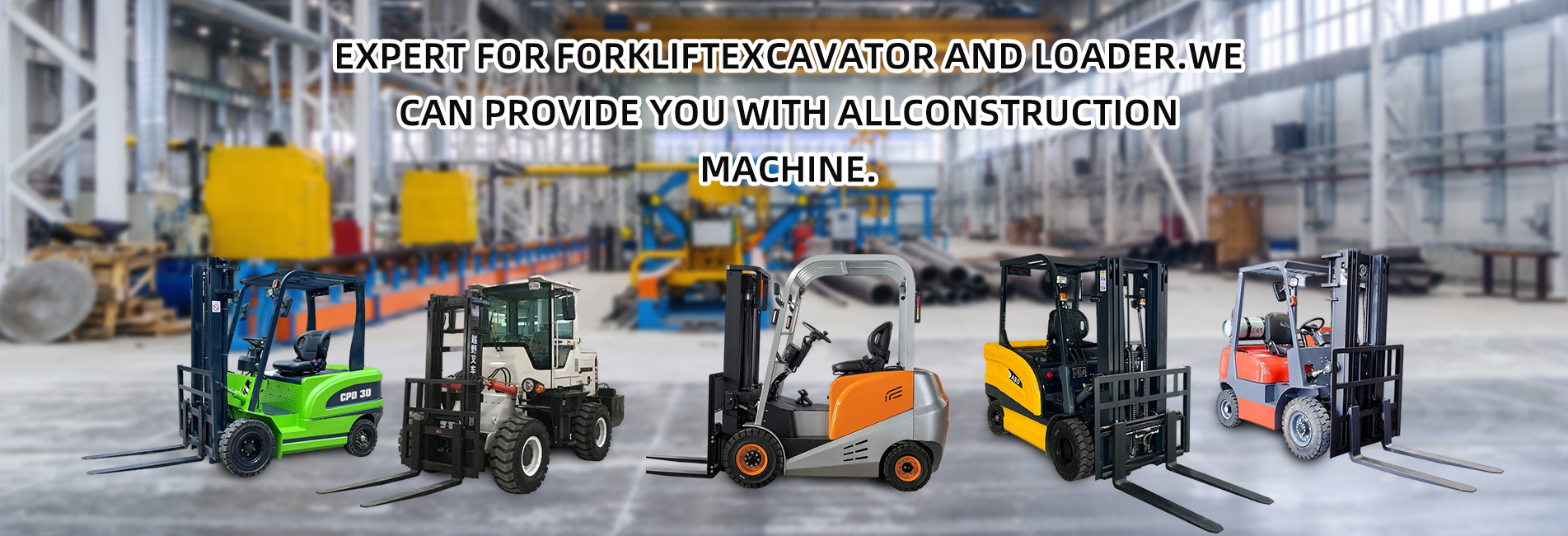Whether small-tonnage forklifts (usually referring to those with a rated lifting capacity of 3 tons or less) are suitable for using internal combustion engine power needs to be comprehensively judged based on various factors such as usage scenarios, operation requirements, and costs. The following is a detailed analysis from three perspectives: applicable scenarios, advantages and disadvantages, and comparison with alternative solutions:

I. Applicable Scenarios for Small-Tonnage Internal Combustion Engine Forklifts
Internal combustion engine forklifts (including diesel, gasoline, and liquefied petroleum gas (LPG) powered ones) still have clear applicable scenarios in the small-tonnage category, mainly reflected in:
- Outdoor or well-ventilated working environments: Such as open-air warehouses, ports, construction sites, etc., where there is no need to worry about exhaust emissions polluting enclosed spaces.
- High-intensity and continuous operation requirements: Internal combustion engine forklifts have a fast refueling speed (which can be completed in a few minutes), and their endurance is limited by the fuel tank capacity, making them suitable for long-term and high-frequency operations (such as cargo transshipment in logistics parks).
- Operations on complex terrains: Internal combustion engine power has a large torque and better adaptability to muddy roads and roads with large slopes, such as uneven sites like construction sites and mines.
- Scenarios lacking charging conditions: If the operation site has no stable charging facilities or cannot reserve charging time (such as 24-hour shift operations), internal combustion engine forklifts can better ensure attendance.
II. Advantages and Disadvantages of Small-Tonnage Internal Combustion Engine Forklifts
Advantages:
- High endurance and energy replenishment efficiency: A full tank of fuel allows continuous operation for 8-12 hours, and refueling takes only 5-10 minutes, which is much faster than the charging time of electric forklifts (usually 4-8 hours, and even fast charging takes 1-2 hours).
- Strong environmental adaptability: The performance of internal combustion engines is less affected in low-temperature (such as northern winter), high-temperature, and humid environments; while the capacity of electric forklift batteries will decrease significantly at low temperatures.
- Lower maintenance costs (in the long term): The core component (engine) of the internal combustion engine has a long service life, mature maintenance technology, and easily available parts; while the service life of electric forklift batteries is usually 3-5 years, and the replacement cost is high (accounting for 30%-50% of the total vehicle cost).
Disadvantages:
- Emission and noise problems: Diesel-powered forklifts emit exhaust gas (containing particulate matter and nitrogen oxides), and gasoline/LPG-powered ones also produce exhaust gas, which is not suitable for enclosed spaces (such as workshops and warehouses); the noise is relatively large (usually above 80 decibels), affecting the working environment.
- Higher fuel costs: In long-term use, fuel costs are higher than electricity costs (especially in areas with low electricity prices).
- Slightly poor operational convenience: Internal combustion engine forklifts need preheating when starting, and there is relatively large vibration during operation; electric forklifts can start immediately and operate more smoothly.
III. Comparative Selection with Electric Forklifts
| Dimension | Small-Tonnage Internal Combustion Engine Forklifts | Small-Tonnage Electric Forklifts |
|---|---|---|
| Applicable environment | Outdoor, well-ventilated, complex terrain | Indoor, enclosed space, flat ground |
| Endurance and energy replenishment | Long endurance, fast refueling | Endurance limited by battery capacity, slow charging |
| Environmental protection and noise | Emission pollution, high noise | Zero emission, low noise (usually below 60 decibels) |
| Cost (purchase + use) | Lower purchase cost, medium fuel + maintenance cost | Higher purchase cost, low electricity cost, but high battery replacement cost |
| Environmental adaptability | Good performance in low-temperature, high-temperature, and humid environments | Significant decline in battery performance in low-temperature environments |
Conclusion
Situations where small-tonnage forklifts are suitable for using internal combustion engines:
- Mainly used for outdoor operations, or the working environment is well-ventilated;
- Need high-intensity, continuous operations, and have tight energy replenishment time;
- The operation site has complex terrain (such as slopes, mud) or extreme ambient temperatures (low/high temperatures);
- Lack of charging conditions, or are sensitive to the initial purchase cost.
If the operation is mainly indoor, emphasis is placed on environmental protection and low noise, or the electricity cost advantage is obvious in long-term use (such as low electricity prices), then electric forklifts are more suitable.


